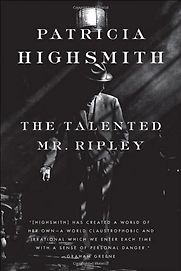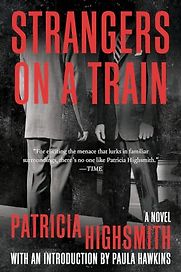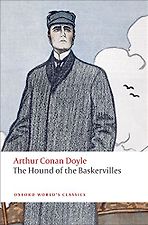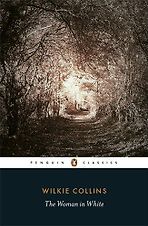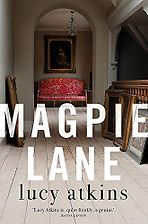Recommendations from our site
“The idea that you want him to succeed even though he’s a psychopath is a real feat of literary genius. Because if anyone put that in a synopsis, you’d think, ‘That’s not going to work.’ Even though every part of your moral consciousness is telling you that it’s wrong, there you are thinking, ‘I want you to get away with this, I want it to go your way.’ To get us, as the reader, to empathize with somebody who is such a horrific, damaged person is just such brilliant writing.” Read more...
“It fascinates me that René Clément, the French film director, adapted this novel into a film called Plein Soleil (known as Purple Noon in the United States). In the story, Tom Ripley is sent from New York to Italy by the father of Dickie Greenleaf to bring Dickie back to the United States. As he ingratiates himself with his son, Tom Ripley adopts increasingly dangerous, amoral and murderous measures to reap the rewards of his lifestyle and finally, steal his inheritance. The novel starts in a gloomy Manhattan, where Ripley meets Dickie Greenleaf’s father. It’s not bright, it’s claustrophobic. And then we come to this Mediterranean world of plein soleil where in the movie everything is brightness—there’s a yacht, these lovely towns, and everybody is wearing lovely styles and costumes.” Read more...
The Best Book-to-Movie Adaptations
Peter Markham, Film Director
“It’s described as the godfather of the modern psychological thriller. Everyone who writes psychological thrillers must acknowledge Patricia Highsmith at some point…What appealed to me most about this book is that Tom Ripley is the ultimate sociopath, and yet we’re rooting for him.” Read more...
The Best Psychological Thrillers
J.S. Monroe, Thriller and Crime Writer
“It’s the first book I read where I was absolutely rooting for the villain, my entire emotional energy focused on willing him not to get caught. Even if you’ve seen the 1999 movie, the book is still worth reading. I love the rags-to-riches element, the settings: 1950s New York, the fictional Mongibello on the coast south of Naples, Venice. Highsmith wrote four more books featuring Tom Ripley, as well as other psychological thrillers.” Read more...
The Best Classic Crime Fiction
Sophie Roell, Journalist
“What I adore about the book is how brilliantly she explores the idea of moral grey areas and how the main character does things in a sort of neutral space—a psychopathic neutral space—and Highsmith writes this in a quite nonchalant way, while building this ongoing tension and horror. You sort of love Ripley, as the novel moves on, but you are also horrified by him. I just think that’s genius: when you can get me deeply caring about a character who I also find appalling and frightening.” Read more...
Lucy Atkins, Novelist
“I think Patricia Highsmith, at one stage, was much more appreciated in Europe than she was in America, even though she was American by birth. I think Ripley just set so many characters in motion because he was one of the first entirely amoral central figures, someone who commits appalling crimes and murders but you actually feel a kind of sympathy for. Well, if not a sympathy, you’re intrigued by the character. It’s also fascinating because he’s a kind of blank canvas. So in The Talented Mr Ripley – which was made into a movie not that long ago – he’s got this friend who he rather sucks up to called Dickie Greenleaf. When he murders Dickie and takes on his persona, it’s almost as if he becomes more real to himself as a person, because he’s being someone else. Which I think is fascinating – and goes back to actors and Charles Paris. This idea of the criminal who does it almost from lack of his own personality rather than the power of his personality. It’s a very interesting area, which has been explored a lot more since, but I think Patricia Highsmith was the first to do it.” Read more...
Simon Brett, Thriller and Crime Writer
